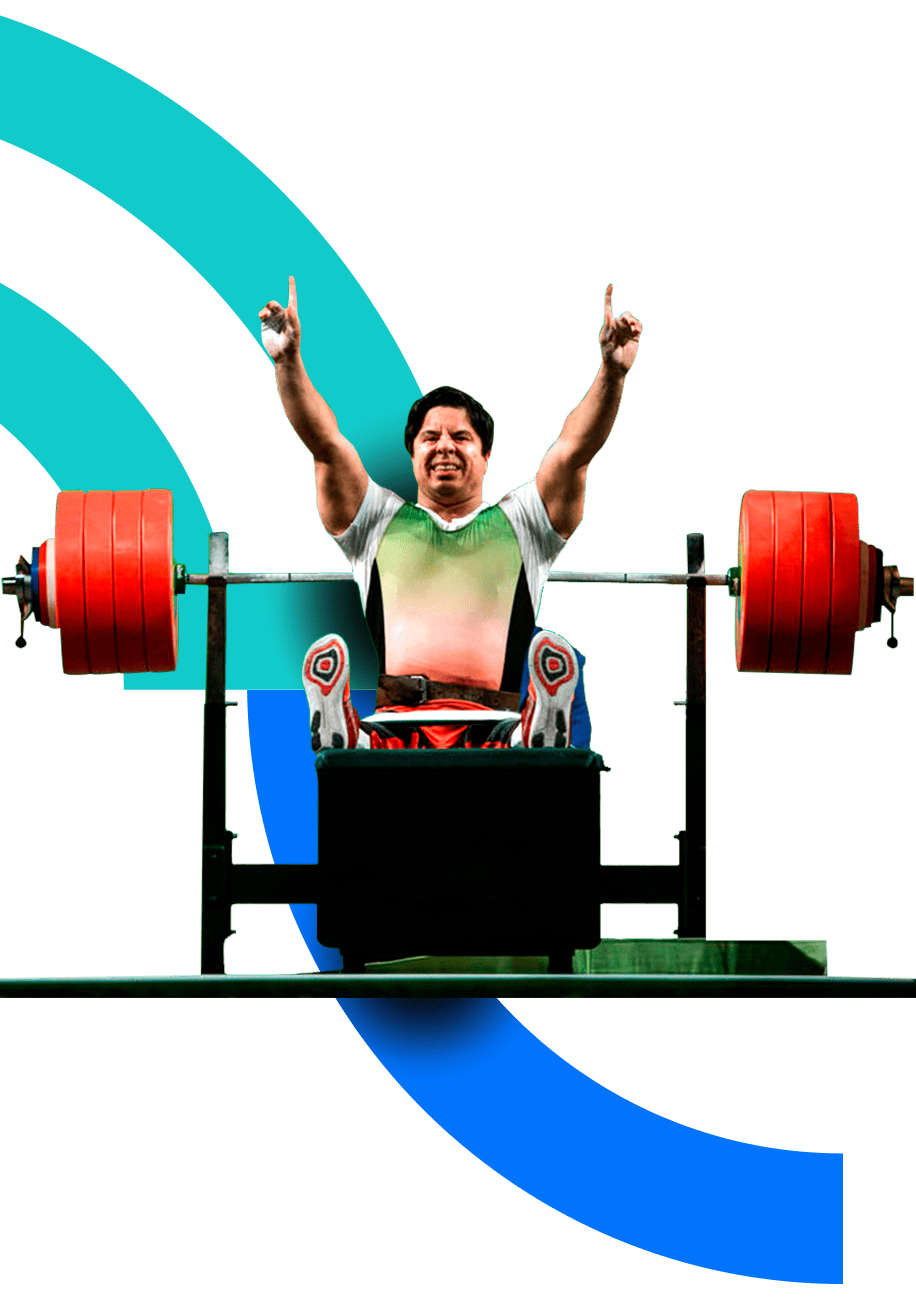How do you compete?
Competition starts with a random draw to determine the weighing and lifting order. Then, athletes will classify within the 10 different weight classes, divided between male and female, with each of them lifting three times their own category. The heaviest lift within each category is the one that will be used for the final classification of the competition.
Competitive rounds are made in sequential order, first by order of the attempt weight and then, if the weight chose is the same, by lot number order (from highest to lowest).
Athletes are positioned face-up on a bench especially designed for this activity. After grabbing the bar with extended arms, the lifter must wait for the signal of the main referee, with the elbows locked and the bar under control.
The bar must be progressively loaded in each round, in which each lifter performs their first attempt in the first round, their second attempt in the second round, and their third attempt in the third round. If an attempt is judged as a “good lift”, the next attempt is automatically raised by 1kg or within 1 minute of the decision, the athlete or their coach/team official can increase to a different attempt weight.
If an attempt is judged as a “no lift”, the next attempt is automatically repeated at the same weight or within 1 minute of the decision, the athlete or their coach/team official can decrease to a different attempt weight.
Under certain conditions, an additional attempt can be requested, the Power Lift, for athletes to break a record that counts towards the final result and medal rankings.
The final result of each athlete will be calculated by the heaviest “Good
Lift” lift attempt weight completed in descending order (the heaviest
“best lift” is the first place in the ranking and gold winner).
In Santiago, athletes compete in the Individual Event and the Mixed Team Event. Results of the mixed team events will be calculated using a coefficient formula (CF) which enables the comparison of the results of athletes from different bodyweight categories. The CF score from each athlete from each Round will then be summed to give the total CF score, with the highest score receiving the highest rank.







